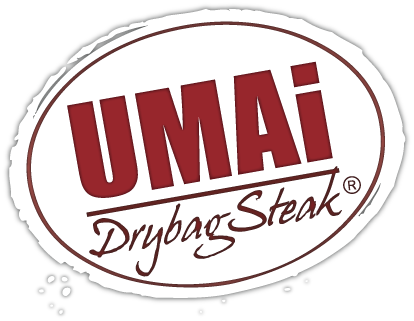The Original Dry Bag Steak | Make Artisan Dry Age Steak at Home › Forums › Dry Aging Steak › General Dry Aging Steak Questions › Risks of Home Dry Aging › Re:Risks of Home Dry Aging
Hello, Scteak.
Let me address your concerns first by saying that there is a need to have some clarification of terms and assumptions. You say: “I’d like to better understand the nature of the health risks of Home Dry Aging.” Are you referring to open air aging? UMAi DrybagSteak dry aging? Aging in a modern fridge? Or in a dorm fridge or a “beer fridge”? With cheesecloth or towels or bare? There are many ways that people conduct Home Dry Aging.
By the same token, having visited over a dozen commercial dry aging facilities, I can assure you there is a gold standard and there is reality. To assume that the gold standard has been applied to all commercial produced dry aged meat is unwise and incorrect.
The very few state-of-the art dry aging rooms are models of sanitized, controlled conditions–and they require such tremendous capital expense and maintenance, that the majority of commercial operations are “dry aging” is rather less than “optimally” controlled conditions. Often the “dry aging process” putting a subprimal a steel cooking tray on a rack merely draped in plastic to “age” in refrigerated warehouse space along side cardboard boxes of “wet-aging” meat in storage. Alternately, it is not uncommon to find meat resting on wire racks in a little used refrigerated cutting room along side cardboard boxes of finished product with people coming in and out of the room to pick up or drop off product. It may also be hung or racked in a refrigerated room and allowed to dry, occasionally with benefit of fans, but only aged for ten days, the minimum to qualify as “dry aged.” If you were to look into the process of commercial dry aging, your assumption of safety would certainly be shaken.
I would be very interested to understand where you gain your information for the impression that “Best I can tell several factors make home refrigerator dry aging more problematic than commercial dry aging.” While indeed, “temperature swings, humidity and meat surface moisture swings, and airborne contamination from other foodstuffs” pose potential risks, all but the rare specialized commercial dry aging operation experiences exactly the same swings and potential contamination challenges, not to mention flavor-impacting environmental influences.
While you are also right in your observation that “Of course yeast and bacteria normally and naturally exist and multiply on the surface of the meat over the course of dry aging including very long runs,” it is important to remember that like any cultured food (cheese, wine, fermented products like sauerkraut, yogurt and miso) the resulting flavors are often found desirable. What we assure you of with appropriately applied UMAi DrybagSteak is that outside flavors and the surface “funk” will be reduced or eliminated.
Your question as to is what differs between these cases of acceptable “culturing” and a case where the dry aging produces harmful toxins or bacteria is best answered by what the scientists who have studied our material have told us again and again–trust your nose. Bad meat is readily recognized by the human nose.
With proper storage temperatures (as in, those safe to store milk), regular circulation of air within the refrigerated environment and proper clean handing of the meat prior and during the aging time frame, pathogens are not a concern. Of course, this all assumes aging of fresh, whole muscle meat that has not been punctured, rolled, cut or in any other way had potential pathogens introduced within the meat.
It is also important to recognize that the meat still needs to be trimmed and cooked at appropriate temperatures to kill an potential surface pathogens.
Furthermore in answer to your question, “If the conditions outside of a certain envelope favor pathogenic organisms over benign ones, is there a source that details that?”, please refer to the research referenced on the UMAi DrybagSteak website Press page for two of the three published studies comparing dry aging traditionally with dry aging using UMAi DrybagSteak technology. Because the material is readily oxygen permeable, the anaerobic bacteria which pose the most likely pathogenic risk do not populate the surface of the meat with either method.
In closing, we would like to remind readers that we have seen too often that “commercial” processes are not a guarantee of food safety. Good practice is the same everywhere–and you can most assuredly safely, prudently create a dry aging environment in your home refrigerator where risk can be effectively mitigated. We offer UMAi DrybagSteak technology as an assist to accomplish this with greater ease and assurance.
